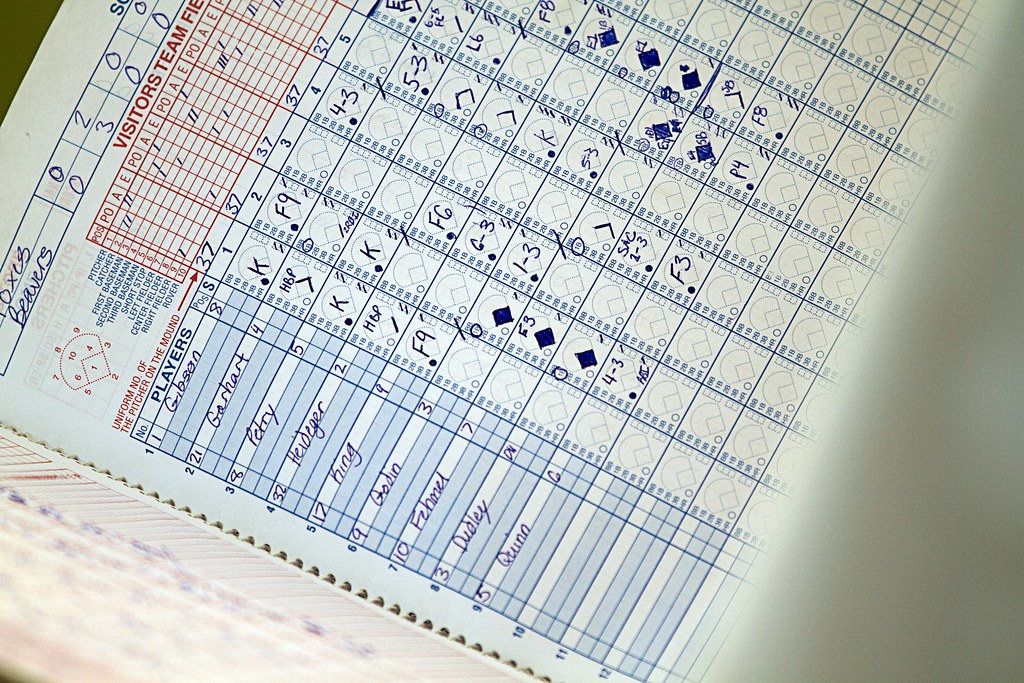Baseball scorekeeping: A language I want to learn

Now that college basketball season is over, I turn my attention to our national pastime — baseball.
(I love how the two seasons dovetail almost perfectly. The Iowa men’s basketball team hit the hardwood for their exhibition game a few days after the Cubs won the World Series last year, and the first MLB games of the 2017 season conveniently fell on the Sunday between the Final Four and national championship game.)
Though basketball is my favorite sport, baseball has always appealed to me. I’ve become much more of a fan as I’ve gotten older, too; the more I watch and the more ins and outs I pick up, the more I love it. During the offseason, I watched each episode of Ken Burns’ documentary, Baseball, and gained a deeper appreciation for the game and its history, both good and bad.
I learn more about baseball every year, but there is a lot I still don’t know about the game. For instance, I just learned that a runner trying to stretch a double into a triple, but is thrown out at third, is given a double — at least I think. (I’m not sure if it is all the time or if it is only when runs are scored. I’ll need to figure that out.)
Some things are still fuzzy, too. Among them is something I find fascinating and would love to learn: the fine art of scorekeeping.
Baseball scorekeeping is more than just tallying total runs, hits, and errors. It involves recording the details of every player’s plate appearance and the results, whether they are home runs, singles, or routine pop flies. It is a simple yet precise system that assigns each defensive position a number, uses abbreviations for each type of out and hit, and combines the two to indicate exactly what happened and when. One could look at a well-kept scorecard and easily see exactly how the game played out — at-bat by at-bat.
That is, of course, if one knows the complex language of scorekeeping.
I don’t, unfortunately. Sure, I know some of the basics that have become common lingo — like a 6-4-3 double-play and the dreaded K to indicate a strikeout — but I don’t know much else. Hell, I’m still fuzzy about the numbering for the defensive positions, especially the outfielders.
Though I may not be the type of person who will always keep score at home while watching the Cubs (some people do, apparently), I want to learn more about scorekeeping and become much more proficient. I want to get to the point where, if I’m at a baseball game and have a pen or pencil and a scorecard, I can confidently keep score and not rely on the scoreboard.

